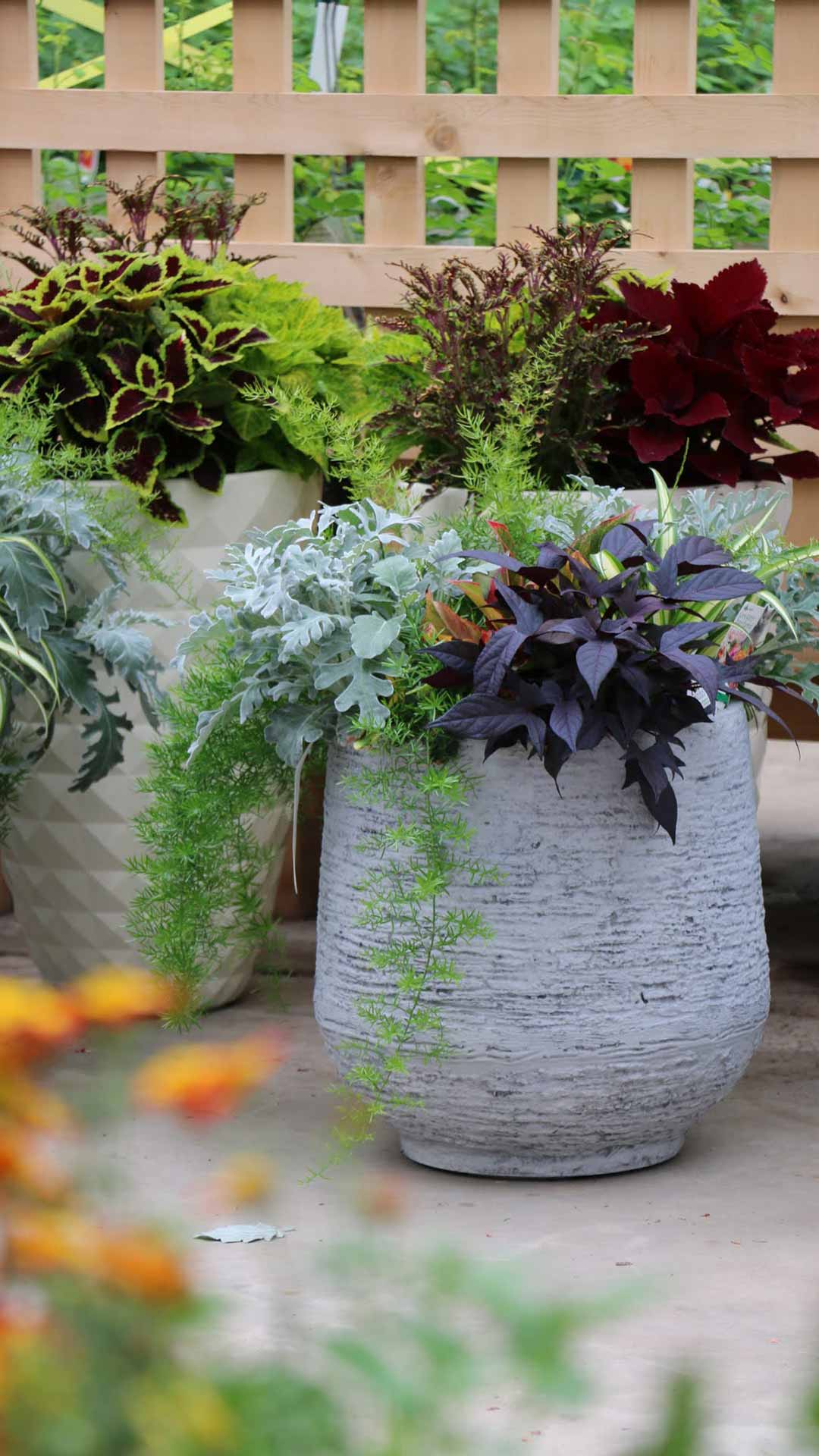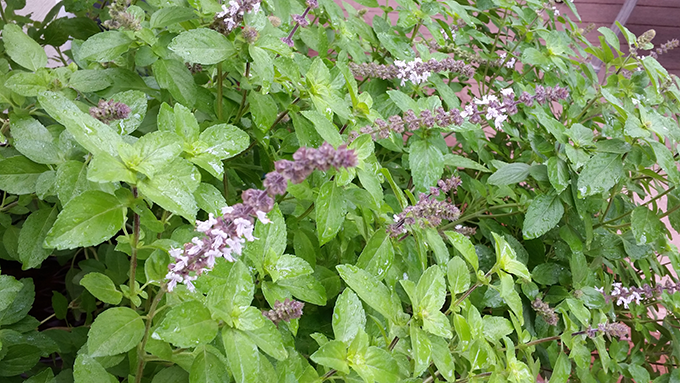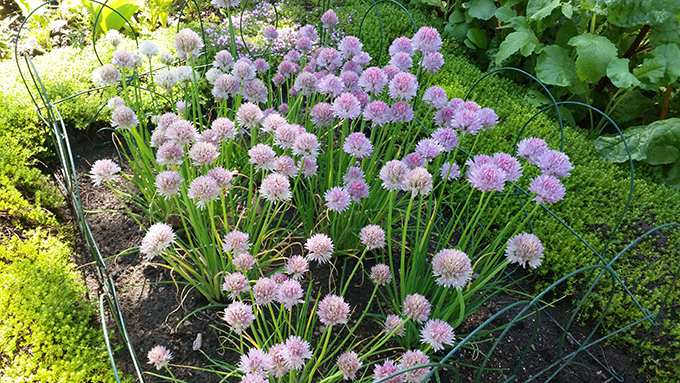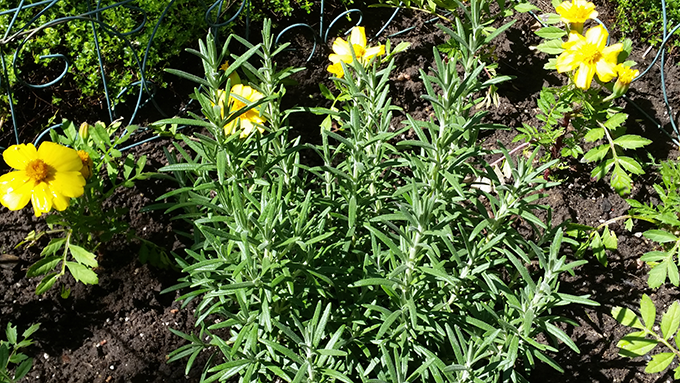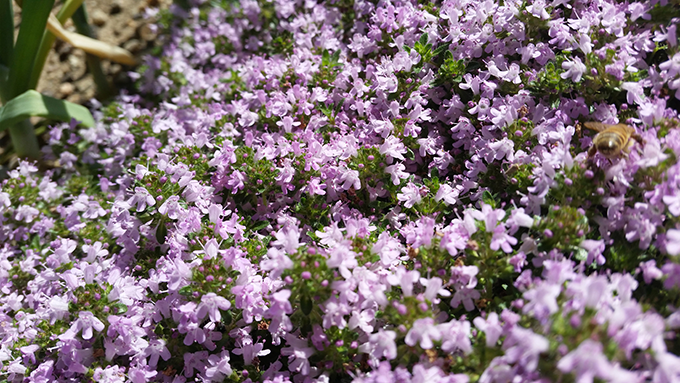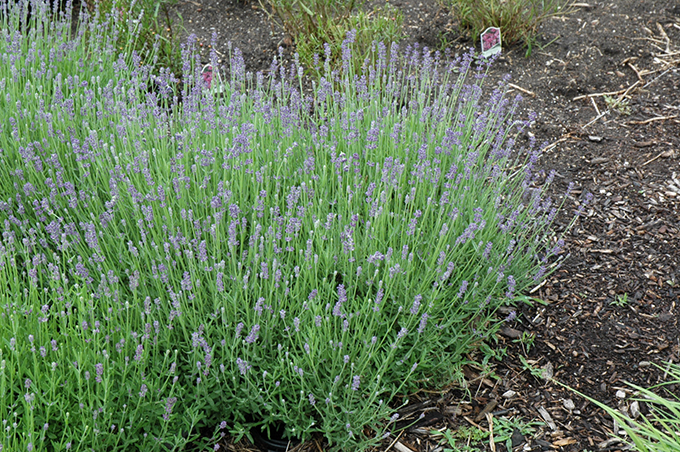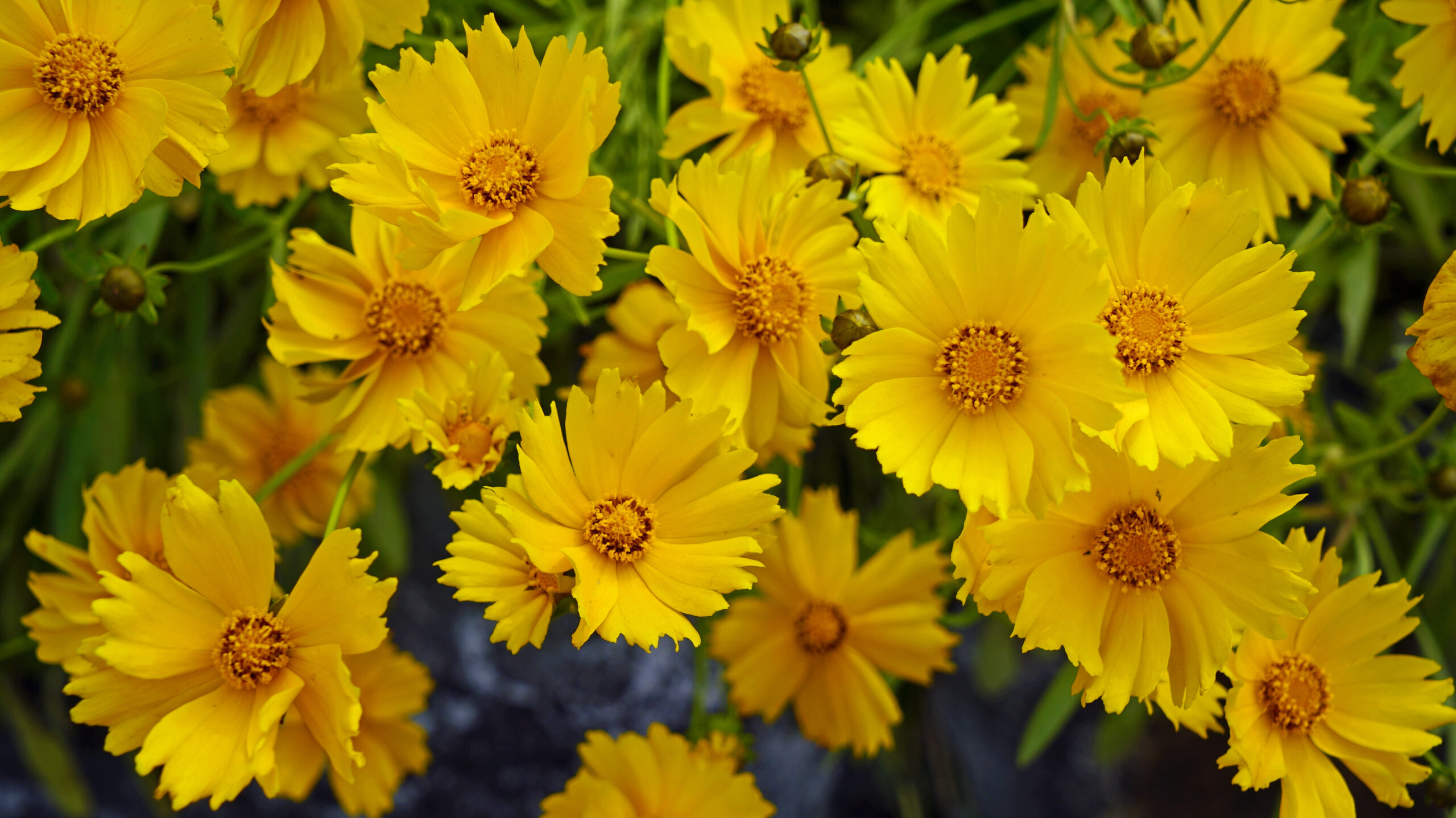Herbs love Colorado, and there are plenty of good reasons why more people should be growing them here. If we meet their basic needs, dozens of different herbs can thrive in Colorado and pay us back with wonderful flavors that enhance our meals and make our world smell sweet and lovely. And if we’re willing to bend “the rules,” herbs are a great way to treat our pollinators to a little something extra.
Herbs won’t have the biggest, flashiest flowers in the garden. In fact, herb experts tell us to cut off the flowers as they appear. That will concentrate all of the plant’s energy into the oils that give the leaves their flavor and aroma. But as a beekeeper, I leave the flowers on the plants until they begin to fade. My honey bees love the sweet nectar that a lot of herb plants produce. Flowering herbs are a treat for many native bees and other pollinators, too.
Either way, growing herbs in pots or in beds in your Colorado garden is easier than you might think. Tagawa Gardens carries herbs year ‘round, but the variety of choices is at its peak as summer begins. If you’ve never tried, now is the time to add herbs to your garden.
It’s all about the basil
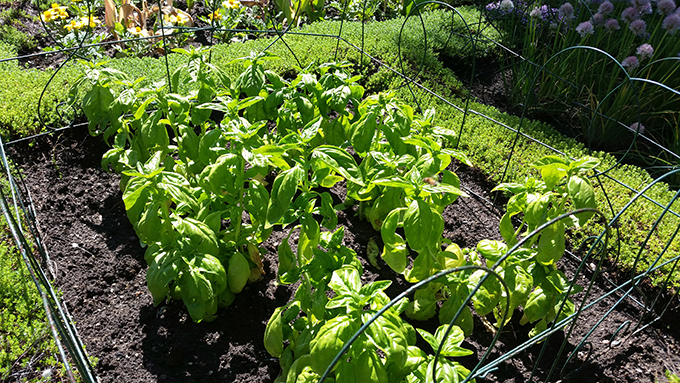
Tagawa’s begins each season with more than twenty different kinds of basil. The traditional “Sweet” or “Italian” basils have a loyal following among the culinary crowd. But there are plenty more to choose from, including the spicier “Thai” basils. They all require the same basic growing conditions: bright sun, a rich, but well-drained soil.
My personal favorite is “African Blue Bush” basil. For the record, I’m no gourmet cook. (I’m barely a cook at all, truth be told. Rumor has it I have a five-ingredient limit.) Still, I find that African Blue Bush has plenty of flavor for cooking or for those lovely Caprese salads…. fresh tomato, olive oil, a little balsamic vinegar, fresh mozzarella and basil.
I grow African Blue Bush because the plants are big…. really big! (Hence the term “bush.”) When I let them flower, there are lots of lovely curving spikes of tiny lavender flowers that the bees can’t resist. I harvest the younger leaves to use uncooked, and I eat the flowers, too. They’re full of that splendid flavor that draws us to basil in the first place.
African Blue can be a bit of a bully and will fill up a pot all on it’s own. I’ve learned not to expect it to share its space with other herbs. Many of the other basils are better behaved and will be fine sharing a large pot with other herbs. I do find that they appreciate a little protection from the harshest mid-afternoon sun.
Give it room to grow, and bright but not harsh afternoon sun. African Blue Bush will not disappoint.
They’re cute. They’re pretty. They’re purplish pink!
If you have any doubts about your ability to grow herbs in your Colorado garden, at least try a pot of chives. They grow easily from seed or from small plants, which Tagawa’s carries year ‘round. Fresh chives can go a long way to dress up potatoes served in lots of different ways. But they’re also great at adding a hint of fresh-onion flavor to a plenty of other dishes.
Chives grown in clumps in veggie or flower beds are charming. Just be careful about letting them self-sow. They’ll routinely run from one part of your garden to another. If you pick and choose where you let them go and pluck out the excess, that’s fine. But too many “volunteers” isn’t a good thing. I have an area where I can let them spread as they please (mostly…). I live and let live with a lot of them because my own honey bees and tiny native bees can’t resist the nectar in the little ball-shaped blossoms.
A little parsley, for flavor or garnish
Parsley and chives have a few things in common. They’re super easy to grow from seed or small plants. But if you turn your back, they’re likely to spread.
“Curl leaf” is the parsley most often used as a garnish. (I can see and taste those deviled eggs now ‘cause they fall within my five-ingredient limit…) Curl leaf parsley is pretty enough to grow for decoration even if it didn’t have such a fresh, bright taste. “Flat leaf” or “Italian” parsley is primarily for cooking. Both are low-maintenance and simple to grow. But like chives, if you grow them in beds and don’t remove the flowers, they will re-seed easily.
Take note: there’s a beautiful caterpillar called a “parsleyworm” that loves to feed on parsley. It’s one of the prettiest caterpillars I’ve seen, with stripes of turquoise, black and yellow. Give it all the parsley it wants! It’s on its way to becoming a swallowtail butterfly, but it needs to eat a lot to get there. Why not plant two pots or extra clumps of parsley so there’s enough to share?
Some perennial herbs?
Rosemary is almost as popular as basil. It’s extremely easy to grow from small plants in a sunny place on your deck or patio. Rosemary is a bit shrub-like, with woody stems. It appreciates soil that contains some grit like cactus mix to give it good drainage. Rosemary does not want to sit in wet soil!
Tagawa Gardens carries two varieties of rosemary that may survive winters in the ground outdoors. Lina is one of the incredibly gardening-saavy ladies in our Perennials Department. She grows “Arp” rosemary on a fairly dry hillside in her garden. She says it will usually survive for about five years, until an especially cold winter takes it out. “Madeline Hill” may also stand up to winter here for at least a few years if temps don’t drop too low.
I grow rosemary outdoors in a large clay pot. It thrives during the summer and produces deliciously-fragrant stems of soft needles. I leave the tiny blue flowers on for the bees.
But I know better than to take my rosemary inside for the winter and try to convince it that it’s a houseplant. Instead, I leave it in a bright, enclosed but unheated back porch. It prefers the cold there to my warm, dry indoor air. As long as I don’t forget to water it, it’s taken temperatures in the 20’s and never had issues. Each spring, I give it a little trim and back outside it goes. After a few years, it gets woody at the base and isn’t as pretty or as productive so I replace it.
Find time for Thyme
The wide varieties of thyme you can grow may surprise you. Tagawa’s has a big selection of culinary thyme that does well in pots. Thyme can also be grown indoors on a sunny windowsill. Thyme needs well-drained soil and full sun, but will tolerate a bit of shade.
9News Garden Guru (and frequent Tagawa Gardens teacher) Rob Proctor grows an ornamental variety of time in his herb garden. “Creeping Red” thyme actually produces pink flowers… by the zillions! These low, tight mats frame beds filled with other delicious edibles like basil and garlic. His thyme borders are never without visiting honey bees on summer days.
Tagawa’s also carries a foot-step friendly line of ornamental thymes called “Stepables” that will grow in pathways between pieces of flagstone or pavers and tolerate light foot traffic. It’s not edible, but it is lovely.
Mmmmm…. Lavender!
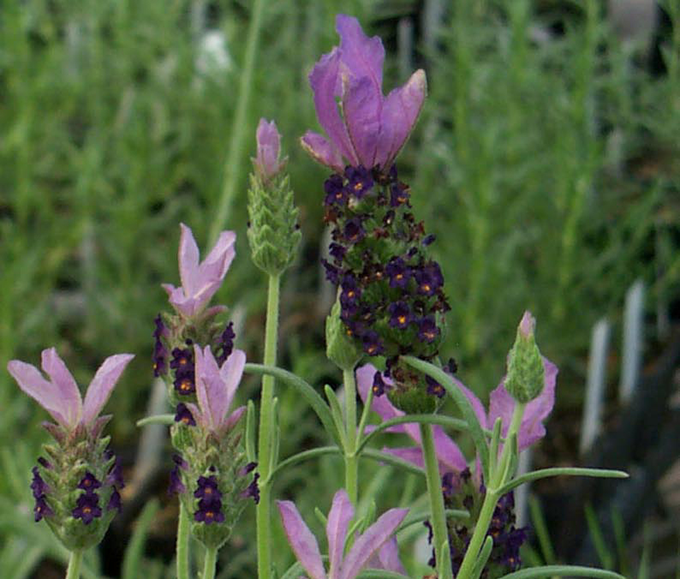
For now, let’s talk lavender. I love lavender. The bees love lavender. Most everyone I know loves lavender. And it’s easy to grow, as long as you can give it two things. It needs full sun, meaning at least six hours of good, bright light. And it needs well-drained soil. The quickest way to kill lavender is to keep its roots too wet.
Lavender is drought tolerant once it’s “established,” meaning once it’s been growing for a couple of seasons. But I’ve learned the hard way not to neglect good, deep watering during those first two years. I won’t make that same mistake again.
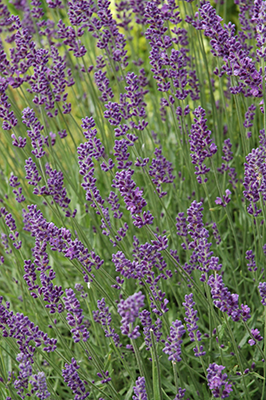
“Hidcote” and “Munstead” are two tried and true lavenders that do very well as perennials in Colorado. A newer variety is “Phenomenal.” Some lavenders are ideal for cooking. Others are best suited for crafts. Some like Spanish lavender have big blooms but are an annual, so be sure to find out if the ones you fall in love with are annuals or perennials to help you decide where to put them for best results. Our Perennials or Herb Department staff can guide you to the plant that would work best for you.
Be sure to join us for Tagawa’s Herb Day on Saturday, June 17 and our newer and popular lavender event, “Lavender Fields Forever” on July 22nd this year. Our celebration of lavender is all about plants that do well here in Colorado, and how you can use them once the flowers are ready to harvest.
And come check out our Herb Department. Aside from the six herbs included here, we have about 100 other kinds of plants that are purr-fect for your Colorado herb garden.
Hope to see you soon!!
More About Herbs and Lavender
Luan shows you how to grow herbs for your garden or patio…
